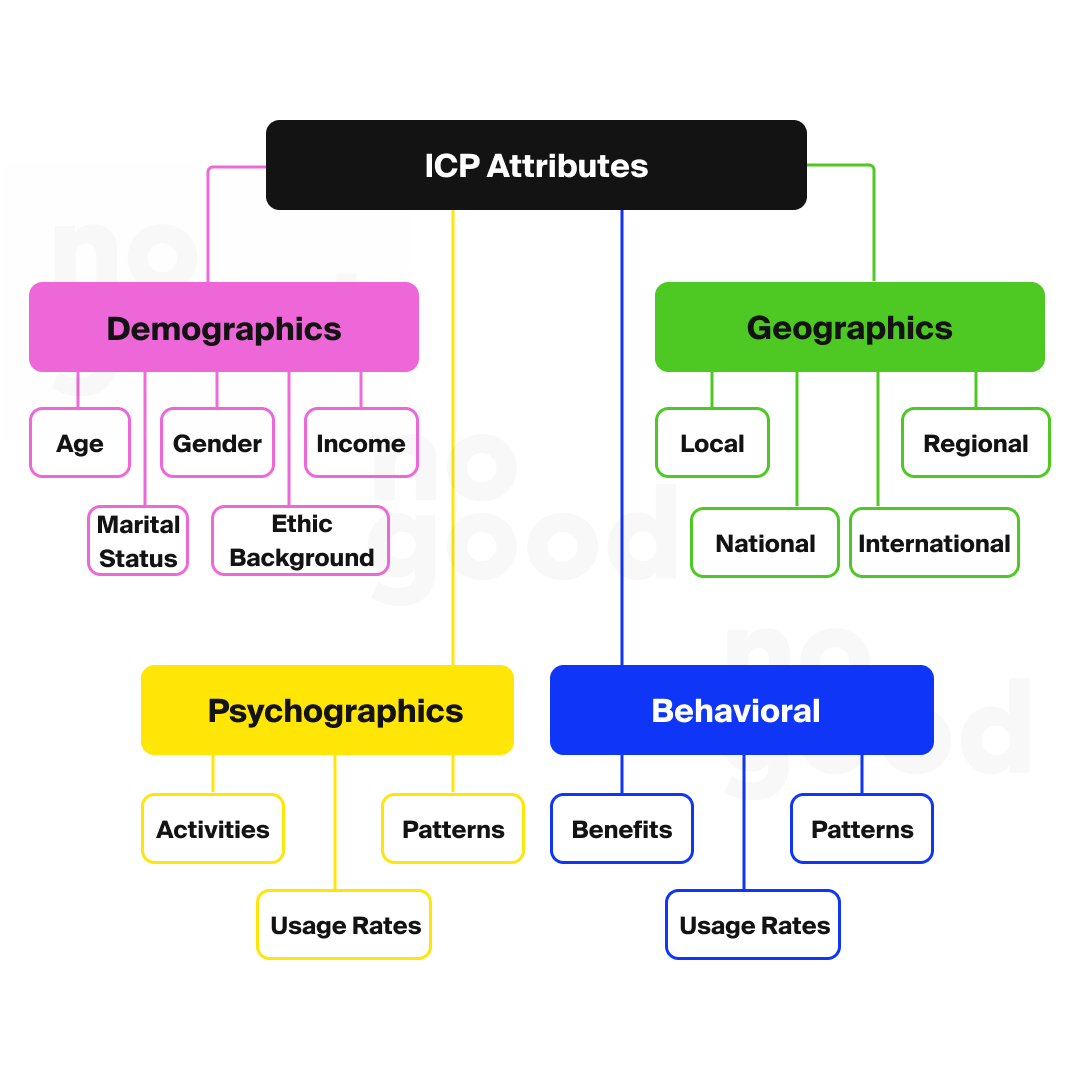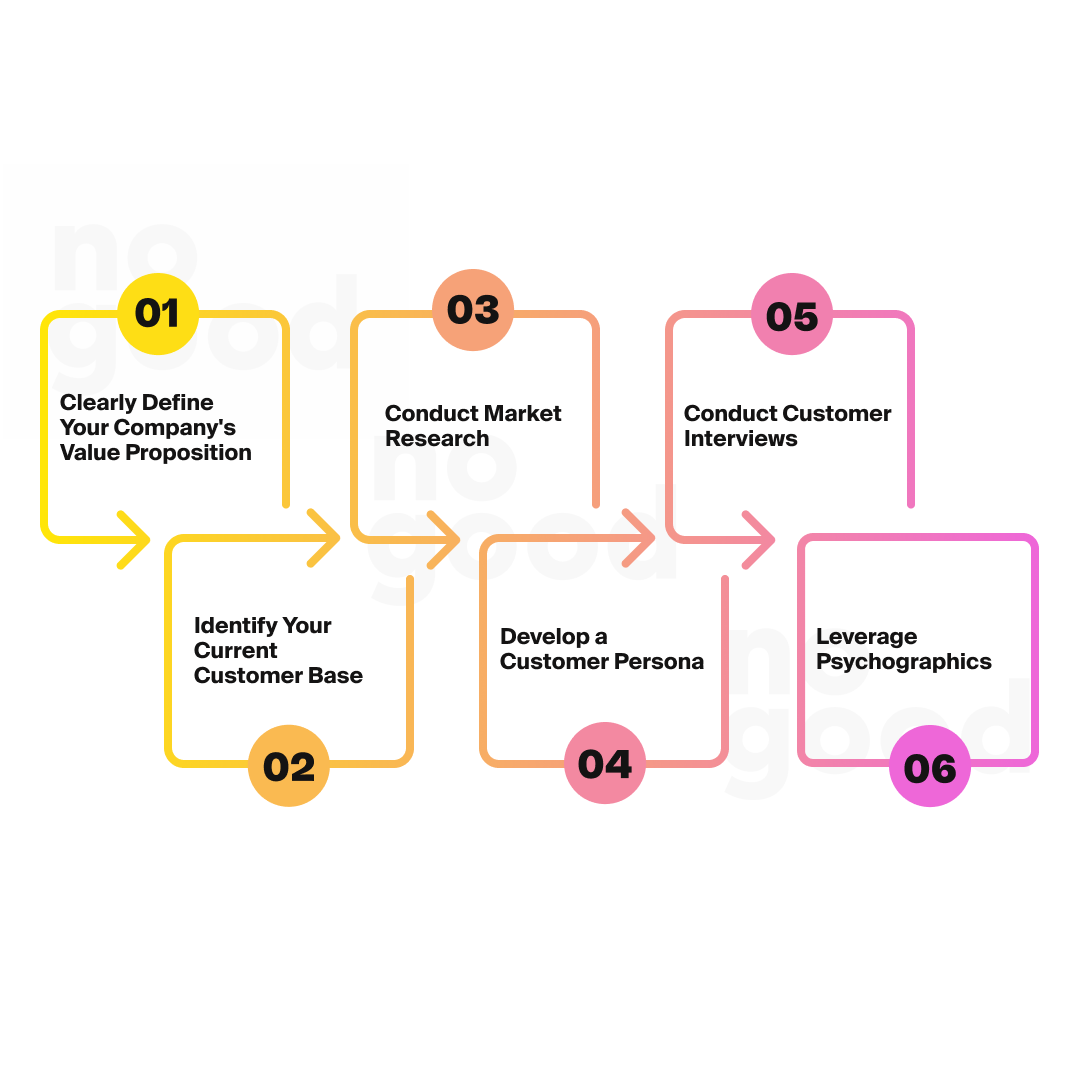Are you struggling to find customers for your startup? Do you feel like you’re constantly throwing spaghetti at the wall to see what sticks? If so, it’s time to take a step back and figure out your ideal customer profile (ICP). Knowing your ICP is essential for any startup looking to grow and succeed.
Your ICP is the fictional representation of your perfect customer. It’s the person who would be the most interested in and benefit the most from your product or service. Without a clear understanding of who this person is, you risk wasting time and resources on ineffective marketing strategies.
That’s where audience targeting comes in. By identifying and targeting your ICP, you can create targeted marketing campaigns that resonate with your ideal customer. You can focus your efforts on the channels and platforms where they spend their time, craft messaging that speaks to their pain points and needs, and ultimately, drive more conversions and sales.
But how do you figure out your ICP? It’s not as simple as guessing or assuming. In this article, we’ll cover the steps you need to take to identify your ICP and start targeting them effectively. From analyzing your current customer base to conducting market research, we’ll give you the tools you need to understand your ideal customer and reach them with precision.
What is ICP?
ICP stands for Ideal Customer Profile. It’s a detailed description of the ideal potential customer that a business wants to attract and serve — who is most likely to benefit from the company’s products or services, engage with the brand, and ultimately become a loyal customer.
An ICP includes information such as demographics, psychographics, behavior patterns, challenges, and pain points that are relevant to the business. By understanding the characteristics and needs of their ideal customers, businesses can tailor their marketing, sales, and customer service strategies to appeal to them and meet their needs effectively.

See what some of the best marketing minds say about the importance of knowing your ICB:
- “The aim of marketing is to know and understand the customer so well the product or service fits him and sells itself.” – Peter Drucker, management consultant and author. By understanding your target audience, you can create products and services that meet their needs and solve their problems. This, in turn, leads to more successful marketing and sales.
- “Marketing is not the art of finding clever ways to dispose of what you make. It is the art of creating genuine customer value.” – Philip Kotler, marketing author and professor. Knowing your target audience allows you to create value for them by understanding their unique needs and preferences.
- “If you try to be all things to all people, you’ll be nothing to no one.” – Seth Godin, marketing author and speaker. By focusing on a specific target audience, you can create marketing messages that are more personalized and effective. This can lead to greater brand loyalty and customer satisfaction.
Here is a breakdown that provides more details and examples to help you create a thorough ICP or target persona and audience analysis for your startup:
Step 1: Clearly Define Your Company’s Value Proposition
Your company’s value proposition is the unique benefit that your product offers to customers. It should be a clear, concise statement that explains why your product is better than competitors’ products. Your value proposition should be based on your understanding of your target audience’s pain points, needs, and desires.
Here’s an example:
“Acme Software provides easy-to-use, cloud-based project management tools that help small business owners save time and increase productivity. Our intuitive platform is designed to streamline project workflows, so you can focus on growing your business.”
Step 2: Identify Your Current Customer Base
To develop an ICP or target persona and audience analysis, you need to start with your existing customer base. Analyze your customer database to identify common characteristics among your customers. These may include demographic information, job titles, company size, industry, and pain points. By understanding the characteristics of your current customers, you can identify the type of customer that is most likely to be interested in your product.
Here are some questions to ask when analyzing your current customer base:
- What industries do our current customers work in?
- What job titles do they have?
- What are their pain points?
- What features of our product do they find most valuable?
- How did they find out about our product?
Step 3: Conduct Market Research
To expand your target audience beyond your existing customer base, you need to conduct market research. This involves gathering data about your industry, competitors, and potential customers. Here are some ways to conduct market research:
- Google Trends and SEO tools: These tools allow you to see search trends for specific keywords. You can use it to identify which keywords are popular in your industry and what topics people are interested in.
- Industry Reports: There are many industry reports available that provide data on market size, growth trends, and customer behavior. Some of these reports may be available for free, while others may require a subscription or purchase.
- Social Media Listening: Social media platforms like Twitter and LinkedIn can provide valuable insights into your target audience’s interests and behavior. Use social listening tools like Hootsuite or Sprout Social to monitor conversations and identify trends.
Step 4: Develop a Customer Persona
Based on your market research and analysis of your current customer base, develop a customer persona. This is a fictional representation of your ideal customer. It should include demographic information like age, gender, education level, and job title, as well as information about their pain points and motivations. Use the information you gathered in steps 2 and 3 to create a detailed customer persona that represents the type of customer you want to target.
Here’s an example:
“Jane is a 35-year-old marketing manager at a mid-sized technology company. She’s responsible for managing multiple projects at once and struggles to keep track of all the moving parts. She’s looking for an easy-to-use project management tool that can help her stay organized and save time. She’s active on LinkedIn and follows industry influencers to stay up-to-date on the latest trends.”
Step 5: Conduct Customer Interviews
Once you have developed a customer persona, conduct customer interviews to validate your assumptions. Reach out to potential customers and ask them questions about their pain points, motivations, and behaviors. This will help you better understand your audience and refine your customer persona.
Here are some questions to ask during customer interviews:
- What challenges do you face in your job?
- How do you currently solve those challenges?
- What would make your job easier?
- What are your priorities when it comes to purchasing software?
- How do you prefer
Step 6: Leverage Psychographics
Psychographics can help you identify the values, attitudes, and behaviors of your target audience. This approach goes beyond basic demographics to give you a deeper understanding of your customers. For example, if you are selling eco-friendly products, your ideal customer might be someone who values sustainability and is willing to pay more for environmentally friendly options. By understanding the psychographics of your target audience, you can tailor your marketing messages to resonate with their values and beliefs.

In conclusion
As a startup, your success hinges on your ability to identify and reach your ideal customer. Without a clear understanding of who your target audience is, you risk wasting time and resources on marketing efforts that fall flat. That’s why creating an ideal customer profile and targeting your audience is crucial for startups looking to grow!






